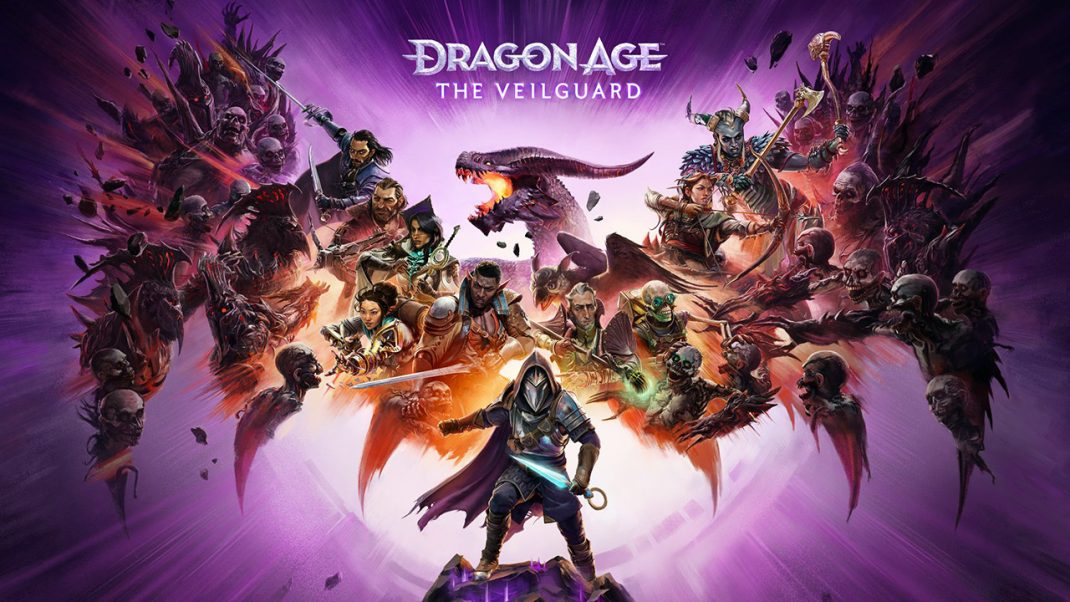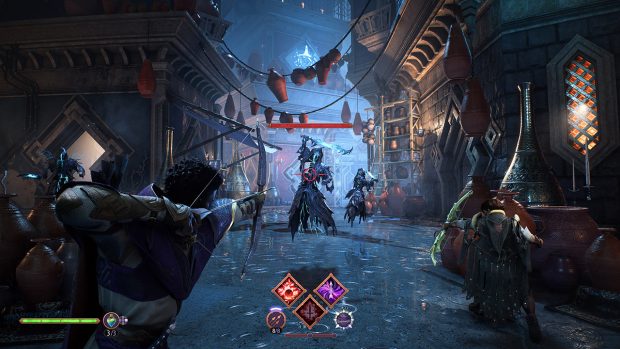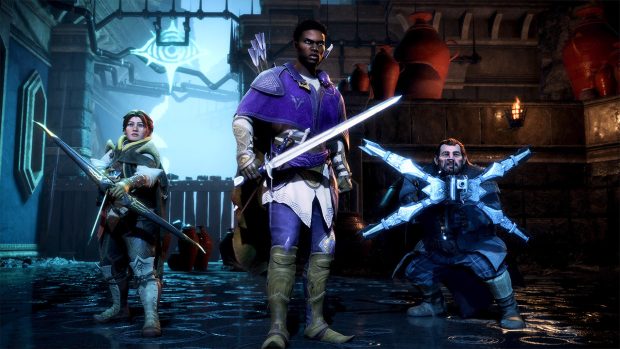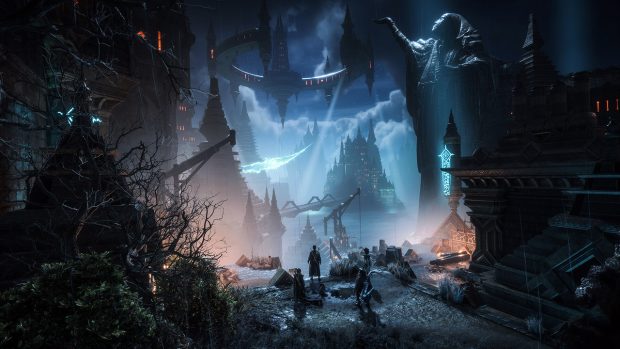Dragon Age: The Veilguard, the latest chapter in BioWare and Electronic Arts acclaimed fantasy RPG series, arrives amidst a landscape of high expectations and cautious optimism. Following the divisive reception of Dragon Age: Inquisition and a protracted development cycle, fans yearned for a return to the series’ roots while embracing innovation. Dragon Age: The Veilguard attempts to navigate this delicate balance, delivering a visually stunning and character-driven experience, but ultimately falters in its narrative execution and thematic exploration.
Stepping into the opulent world of Tevinter, players are immediately greeted by a visual feast. The environments are breathtaking, from the sun-drenched coastal city of Antiva to the haunting depths of ancient elven ruins. The art style strikes a compelling balance between stylized fantasy and grounded realism, with meticulously crafted character models, impressive animations, and richly detailed environments. The combat, while a departure from the series’ tactical origin, is a spectacle of its own, with flashy spells, brutal finishing moves, and dynamic camera angles that capture the intensity of each encounter.
However, this technical prowess is somewhat undermined by a narrative that struggles to maintain momentum and deliver a truly compelling experience. The central conflict initially revolves around Solas, the elven god known as the Dread Wolf, who seeks to tear down the Veil between the physical and spiritual realms, potentially unleashing chaos upon the world. While this premise holds immense potential for a morally complex and emotionally resonant story, the execution feels underwhelming. Solas himself remains a distant figure for much of the game, his motivations and actions shrouded in mystery. The newly introduced elven gods, intended to serve as the primary antagonists, lack depth and come across as generic embodiments of evil.
The narrative’s slow burn and lack of urgency might leave some players feeling disconnected from the central conflict. The game seems more interested in exploring intimate character vignettes and hidden lore reveals than delivering a consistently gripping main plot. While these moments can be enjoyable, they often feel disjointed and lack a strong central thread. The pacing suffers as a result, with long stretches of exploration and side quests punctuated by brief bursts of plot progression.
Combat in Dragon Age: The Veilguard continues the departure from the series’ initial, tactical approach. It is played out in real-time with a focus on action and responsiveness. Players control their character directly, dodging attacks, unleashing abilities, and chaining together combos. The only pause in the action is when you bring up your companion skill wheel in a very Mass Effect Andromeda style. While the combat can be enjoyable, it lacks the strategic depth of previous games. The companion AI can also be inconsistent, meaning that manual intervention is important to ensure they are using their abilities effectively. This is a sort of contradiction in that the combat lends itself to an action-RPG where you hack away while dodging and blocking. The action can be fast and furious – however you need to have the discipline to hit the skill wheel in the heat of battle to unleash your companions. Meshing these two strategies is a tough balance and The Veilguard only mildly pulls it off. As my Rook got stronger, I eventually got to the point when I could solo entire fights without engaging my companion’s skills at all. It was actually more enjoyable that way.
Despite its shortcomings, Dragon Age: The Veilguard has its strengths. The character interactions are often well-written and engaging, showcasing BioWare’s signature talent for crafting memorable companions. Each companion has a distinct personality, backstory, and set of motivations, and their interactions with the player and each other are often the highlight of the game. However, the initial lack of friction between them can make the early game feel somewhat bland. It’s only later, when personal challenges arise and individual flaws come to the forefront, that the companion dynamics truly shine. Your character, Rook, has the option to respond to character dialogs in a variety of ways – each denoted by a particular icon to convey the tone of what you will say. Unfortunately, you can never really be antagonist in your responses – even when selecting the staunch/stoic/hardnosed reply options. It feels like everyone is always trying to get along and being rather milk toast in how they react to each other.
The world-building is another area where Dragon Age: The Veilguard excels. Tevinter is brought to life in rich detail, with its complex political landscape, diverse cultures, and fascinating history. Players who enjoy exploring lore and uncovering hidden secrets will find much to appreciate here. The game also attempts to tackle complex themes such as social inequality, political intrigue, and the nature of faith. However, these themes are often explored in a superficial manner, lacking the nuance and depth that the series is known for.
Dragon Age: The Veilguard’s transgender themes that have been rather polarizing are a welcome breath of fresh air in terms of representation. That being said, the manner in which they present them (and many of the player’s dialog options and written companion character dialog) feel like they were written by a first-year screenwriting student. Because of this, it feels like they are beating the player over the head with them instead of weaving it all into a coherent narrative. Representation is best served when players believe in the world they are playing – with multiple cultures represented in a way that feels natural. The representation in Dragon Age: The Veilguard is more like the writers hitting the player in the face with script pages that seem out of place with the rest of the game. So bravo to BioWare for representing such a marginalized group, but I hope they tighten it up and do more showing rather then telling next time around.
Dragon Age: The Veilguard’s visuals are undeniably impressive, with a stylized aesthetic that captures the grandeur and magic of the Dragon Age universe. However, the occasional lighting issues, particularly in darker environments, can be frustrating. The soundtrack, while generally fitting, is somewhat understated and lacks memorable tracks that truly enhance the emotional impact of key moments.
Ultimately, Dragon Age: The Veilguard is a game that struggles to find its identity. It attempts to balance a character-driven narrative with a high-stakes plot, but it doesn’t quite succeed in either. While it offers moments of brilliance, particularly in its character interactions and world-building, it is ultimately a somewhat flawed entry in the Dragon Age series. It is a game that feels both familiar and alien, a testament to the challenges of balancing innovation with the expectations of a devoted fanbase. There is a lot to like in Dragon Age: The Veilguard, but it doesn’t live up to what its moments of brilliance show us it could have been.
Overall Rating 3 out of 5
Pros:
- Stunning visuals and impressive world-building
- Memorable companions and engaging character interactions (eventually)
- Satisfying combat with a focus on action and responsiveness
Cons:
- Lackluster main plot and underwhelming antagonists
- Uneven pacing and disjointed narrative
- Misses opportunities for moral complexity and thematic exploration








